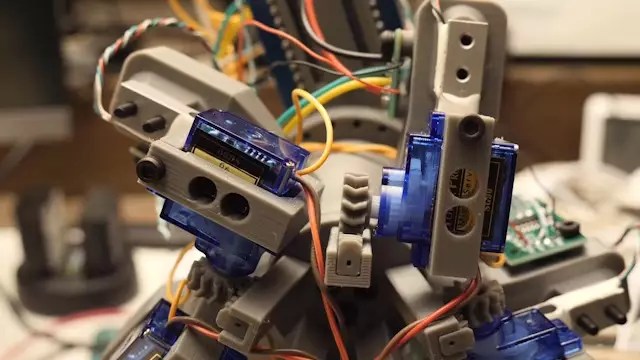Imagine the thrill of breaking into a safe, but with a machine instead of a human—a robot that uses the laws of physics to decipher and manipulate complex locking mechanisms. This concept, although still in its infancy, embodies the cutting-edge fusion of robotics, mechanical engineering, and tactile sensing. The idea is not just a fantastical sci-fi dream but a tangible pursuit, pushing the boundaries of what automated systems can achieve in security bypassing.
The allure of such technology is undeniable. Lock picking has long carried an air of intrigue and mastery, traditionally performed by skilled humans or cyber-enthusiasts wielding their finesse and experience. Introducing robots into this domain transforms it from an art into a science, challenging old notions of skill and raising questions about security and ethical considerations. Could machines eventually substitute for expert lock pickers, and what implications would that have for safety and privacy?
The Challenges of Mimicking Human Intuition with Machines
While the concept sounds straightforward—use sensors to detect tension and resistance within a lock—the practical hurdles are formidable. Initial attempts by projects like Sparks and Code have demonstrated the complexities of translating physical sensations into machine-readable signals. Their early robots, which relied on brute-force methods, proved painfully slow, taking days to open simple pin tumbler locks. The goal was to develop a robot capable of sensing the internal mechanics of a lock, applying just the right amount of pressure to turn pins without breaking or jamming the system.
The core difficulty lies in replicating the nuanced touch and adaptive decision-making of a human lock picker. Human operators can feel subtle resistance changes and intuitively adjust their approach, a feat that’s incredibly sophisticated. Robots must instead rely on precise sensors and algorithms, and even then, the variability in lock designs, materials, and manufacturing imperfections complicate things further. More advanced locking mechanisms—ones with complicated barrels and multiple spins—are designed to thwart such attempts, making the task even harder.
The Empirical Struggles and Persistent Innovation
Despite the ambitious vision, the journey to create a reliable physics-based lockpicking robot has been riddled with setbacks. Sparks and Code’s experiments exemplify this struggle: their modifications, extensive tweaking, and iterative testing highlight both the potential and the difficulties involved. The project has currently been shelved, awaiting breakthroughs that could make sensing and response more accurate and faster.
However, these setbacks do not diminish the significance of this pursuit. Each iteration not only advances our understanding of robotic manipulation but also forces us to confront crucial questions about security vulnerabilities. If machines can learn to pick locks—especially with the aid of real-time physical sensing—they pose a new kind of threat that calls for robust countermeasures. Moreover, the research fuels innovations that might one day translate into other fields such as automated maintenance in inaccessible environments or sophisticated diagnostics.
The Ethical and Future Implications of Robotic Lockpicking
The ethical landscape behind robotic lockpicking is complex. On one hand, developing such technology could aid true security professionals in identifying vulnerabilities in their systems, enhancing overall safety. On the other hand, it could also enable malicious actors to bypass security in ways that were previously difficult or impossible. The dual-use nature of this technology demands careful regulation and conscientious development.
Looking ahead, the trajectory suggests that physics-based robotic lockpickers are an inevitable evolution—an extension of the ongoing synergy between artificial intelligence, machine sensation, and mechanical finesse. As these systems mature, they will likely become not only tools for security testing but also catalysts for the proliferation of new lock designs resistant to automation. Ultimately, this line of innovation embodies the relentless human desire to push technological frontiers, even if that means challenging the very notions of security we’ve come to trust.
This pursuit exemplifies the spirit of experimentation and the quest for mastery through engineering. It’s a fascinating intersection where physics, robotics, and cybersecurity collide, promising a future where machines could both threaten and enhance our understanding of safe access. While the current state of the art remains imperfect, the persistent effort invested by innovators indicates that we are on the cusp of a new era—one where lockpicking robots could become a fundamental element of security analysis, for better or worse.


Leave a Reply